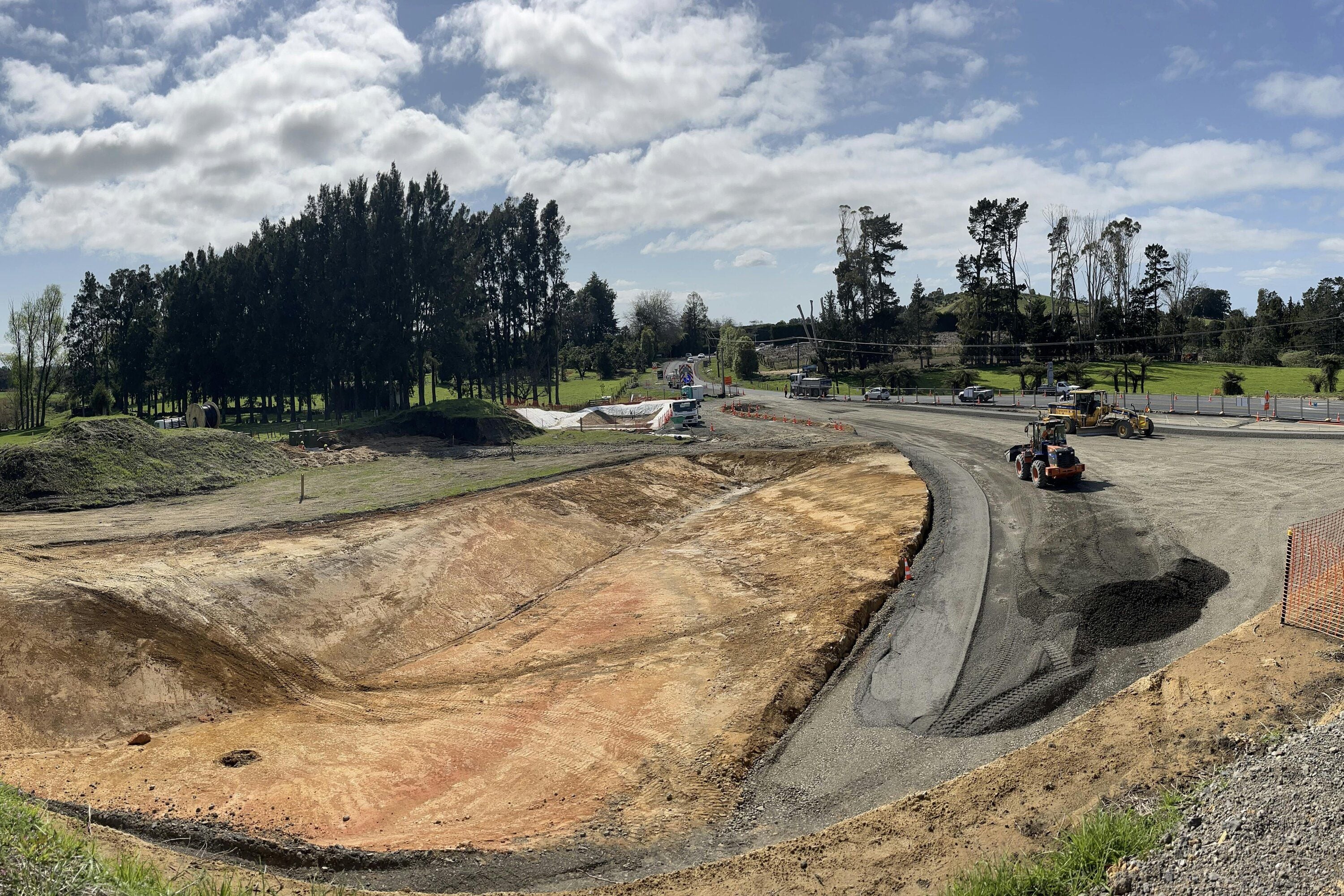Construction of a new temporary roundabout begins today for commuters using State Highway 2 and the Ōmokoroa intersection, with the removal of power lines first.
Removing the power cables is a purely engineering procedure, said Western Bay of Plenty District Council infrastructure group general manager Cedric Crow.
“It is not ideal to have power cables in the middle of the road or cars driving over it during construction,” he said.
The utilities will be relocated first to ensure future-proofing. This avoids significant earthworks, and the cables won’t have to be dug up later, Crow said.
"You put the cables in now and in the right location, so they don't have to be dug up at a later date and damage the new road".
There will be stop-go periodically over the next few months.
“There will be some disruption with the stop-go, but ideally, what we’re trying to achieve is minimise the stop-go to the critical bits around the widening,” Crow said.
Once the roadworks resume in January, the roundabout project has a completion date of February 2026, and the stop-go will cease afterwards, he said.
Construction will be in three distinct stages; first moving the utilities, including power, fibre, water and bulk earthwork, and digging out the future road and then putting metal and asphalt is the last stage, Crow said.
“The first part we’re starting from now until Christmas.”
Crow said part of the infrastructure project is to cater for the projected population growth of Ōmokoroa, reaching 13,000 over the next 10 years.
The project had a one-and-a-half-year planning stage and is a joint infrastructure project. NZTA, the New Zealand Government , and Western Bay of Plenty Council shared the funding.
“Five million of the funding is from NZTA portion, and then there’s $35 million from the Infrastructure Acceleration Fund to fund the enabling structure, to unlock the housing, and then there’s about $3 million of council funding.”
The roundabout is temporary, with a shelf life of only 10 years as opposed to ones that are designed for 25 to 50 years, as the Takitimu North Link will eventually “Grow on top of it”, Crow said.
“So it’s quite a significant saving,” he said.
Major infrastructure projects like these provide value for money, reduce disruption, and maintain traffic flow as much as possible, according to Crow.
“You get it all done in a year and a bit versus being drawn out for four years.”



0 comments
Leave a Comment
You must be logged in to make a comment.